Find the Best UV Car Window Tinting Services Near You: Protect Your Ride and Enhance Comfort
Abdul Wahab • March 8, 2025
The body content of your post goes here. To edit this text, click on it and delete this default text and start typing your own or paste your own from a different source.
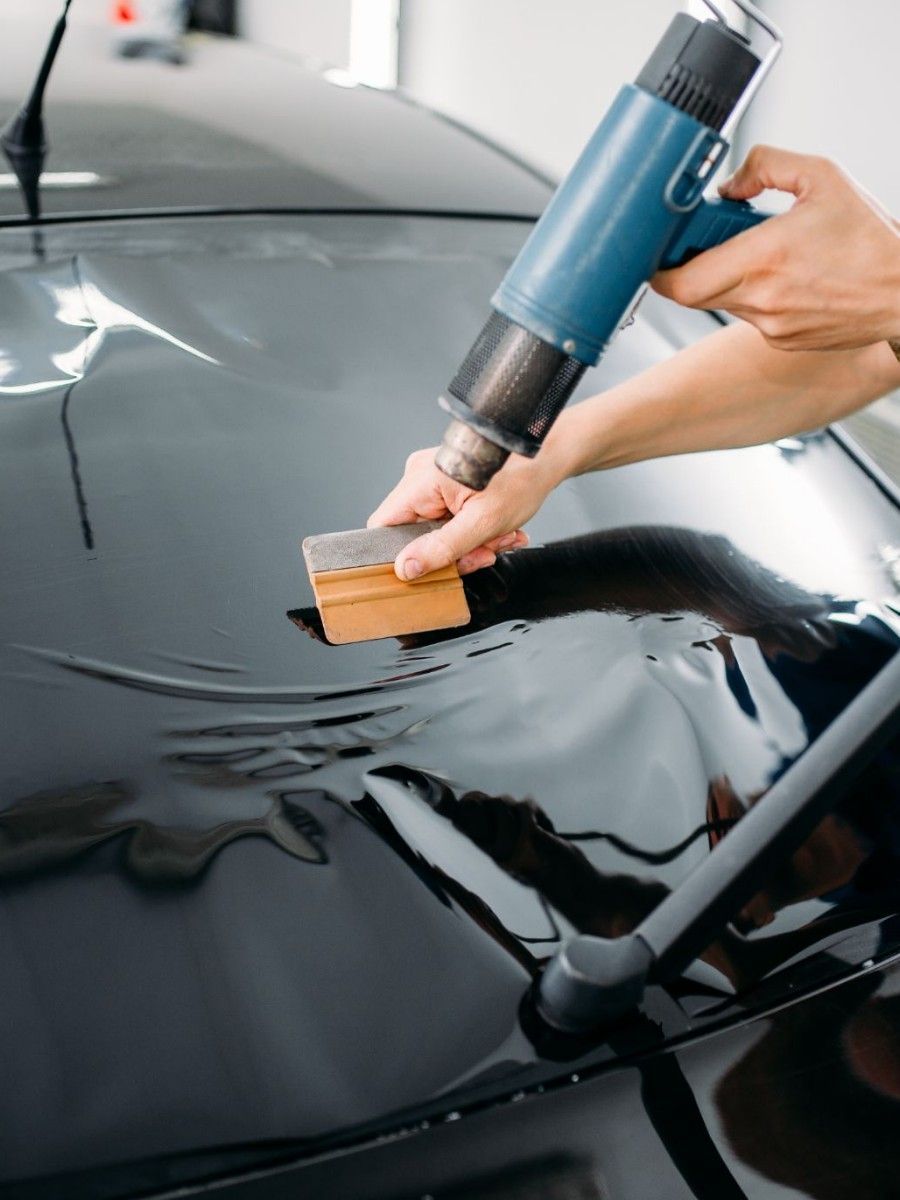
Your vehicle faces daily exposure to harsh sunlight, extreme heat, road debris, and environmental contaminants. Over time, these elements can cause faded interiors, cracked dashboards, peeling paint, and reduced resale value. Investing in professional vehicle protection services is not just about looks—it’s about long-term care, comfort, and value. Why Heat & UV Protection Is Essential for Your Car Excessive heat and harmful UV rays can damage your car’s interior and exterior faster than you realize. Prolonged sun exposure leads to: Interior fading and cracking Increased cabin temperature and discomfort Paint oxidation and loss of shine Higher maintenance and repair costs Premium auto window tinting helps block harmful UV rays, reduces heat buildup, and improves driving comfort while giving your car a sleek, modern look. Shield Your Paint with Paint Protection Film (PPF) Road debris, stone chips, scratches, and minor abrasions are unavoidable—unless your car is protected. Paint Protection Film (PPF) acts as a strong, invisible shield that preserves your vehicle’s original paint. Prevents scratches and rock chips Maintains factory finish Self-healing technology for minor marks Ideal for high-impact areas like bumpers, hoods, and mirrors PPF is a smart choice for drivers who want long-lasting protection without altering the appearance of their vehicle. Long-Lasting Shine with Ceramic Coating If you want your car to stay glossy and protected year-round, ceramic coating is the solution. This advanced coating forms a durable layer over your paint that: Repels dirt, water, and contaminants Protects against UV rays and oxidation Enhances gloss and depth of color Makes washing and maintenance easier Ceramic coating not only keeps your vehicle looking brand new but also reduces long-term upkeep costs. Professional Installation Makes the Difference High-quality materials alone are not enough—expert installation is crucial for maximum performance and durability. Professional vehicle protection services ensure precise application, long-lasting results, and protection tailored to your driving needs and environment. Call to Action (CTA) Ready to protect your vehicle from heat, UV damage, and everyday wear? Upgrade your car with professional Auto Tinting, Paint Protection Film (PPF), and Ceramic Coating today. Get expert installation, premium materials, and results you can trust. 👉 Visit: https://www.fivestarautotint.com/ 📞 Book your service now and give your vehicle the protection it deserves!
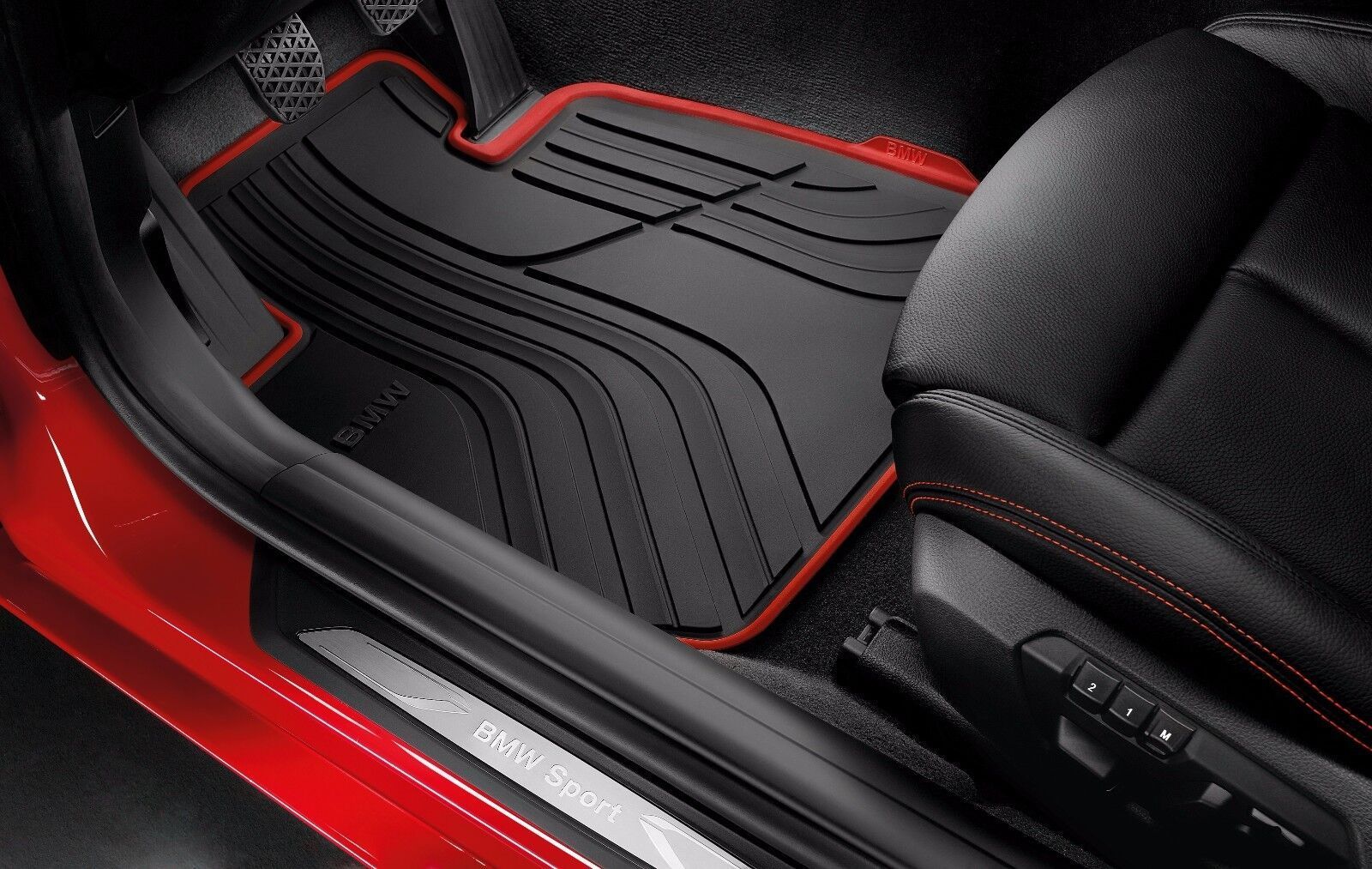
Are your car mats worn out, torn, or constantly slipping under your feet? Old and low-quality car mats don’t just ruin your car’s interior look — they also fail to protect your vehicle from dirt, water, spills, and long-term floor damage. For drivers in Modesto and Livermore , upgrading to custom-fit car mats is one of the smartest ways to protect your vehicle and maintain its value. Why Worn-Out Car Mats Are a Serious Problem Many car owners ignore damaged mats until the problem becomes obvious. Poor-quality or ill-fitting mats can cause: Permanent carpet stains Moisture buildup leading to odor and mold Reduced resale value Slipping mats that interfere with pedals Constant cleaning frustration In areas like Modesto and Livermore , where daily commuting, dust, rain, and road debris are common, standard mats simply don’t provide enough protection. The Custom-Fit Car Mat Solution Custom-fit car mats are designed specifically for your vehicle’s make and model, offering complete floor coverage and a secure fit. Unlike generic mats, they stay in place and protect high-wear areas more effectively. Benefits of Custom Car Mats: Precision-fit design for maximum coverage All-weather protection against mud, spills, and dust Easy-to-clean materials that save time Enhanced interior appearance Long-lasting durability Whether you drive a sedan, SUV, or truck, custom-fit mats provide everyday protection that generic options simply can’t match. Professional Car Mat Services in Modesto & Livermore Drivers searching for car mat services in Modesto or custom car mats in Livermore need a solution that combines quality materials with expert installation. Professional services ensure your mats are properly fitted, aligned, and secured — giving your car a clean, polished finish while protecting the interior for years. At Five Star Auto Tint , premium interior protection solutions are designed to meet the needs of California drivers. From custom-fit car mats to complete interior enhancement services, every detail is handled with precision and care. 👉 Learn more about professional auto protection services at https://fivestarautotint.com More Than Just Car Mats – Complete Interior Protection Car mats work best when paired with other interior and exterior protection services. Many vehicle owners in Modesto and Livermore choose to upgrade their cars with additional services such as: Window tinting for heat and UV protection Paint Protection Film (PPF) for exterior durability Interior detailing for a refreshed look Ceramic coatings for long-term protection By combining these services, you ensure your vehicle stays protected, comfortable, and visually appealing — inside and out. Why Local Drivers Choose Expert Installation Local expertise matters. Professional installers understand regional driving conditions and recommend materials that perform best in Central Valley weather . Choosing expert car mat services ensures: Correct fit without gaps or curling Secure placement for driving safety Materials suited for local road conditions Long-term protection with minimal maintenance Final Thoughts If you’re dealing with worn-out car mats, now is the perfect time to upgrade. Custom-fit car mats provide superior protection, enhance your car’s interior, and help preserve its value. For reliable car mat services in Modesto and Livermore , trust professionals who focus on quality, precision, and long-term results. 🔗 Explore premium vehicle protection solutions today at https://fivestarautotint.com

Looking to upgrade your car’s look or protect its paint? At Five Star Auto Tint, our premium car wrap services in Modesto, Sacramento, and Livermore, California offer the perfect solution. From full vehicle wraps to custom graphics, we combine style, durability, and professional installation to transform your ride. What Are Car Wraps? A car wrap is a high-quality vinyl film applied to your vehicle’s surface to change its color, design, or finish. Unlike traditional paint jobs, car wraps are affordable, reversible, and customizable, making them ideal for both personal vehicles and business branding. With a car wrap, you can: Protect your original paint from scratches, chips, and UV damage Choose from glossy, matte, satin, metallic, or textured finishes Showcase custom designs or logos for business or personal style Why Choose Our Car Wrap Services? 1. Protect Your Car’s Paint Our vinyl car wraps act as a protective barrier, keeping your vehicle safe from everyday wear, minor scratches, and environmental damage. This ensures your car looks new longer and helps maintain resale value. 2. Stunning Customization Options Express your unique style with full or partial vehicle wraps, custom graphics, or even fleet branding for your business. From vibrant colors to textured finishes, our team delivers a professional and flawless installation every time. 3. Cost-Effective & Reversible Compared to a complete repaint, car wraps are budget-friendly and fully removable. Change your vehicle’s look whenever you want without harming the original paint—perfect for leased vehicles or style updates. 4. Fast Installation & Low Maintenance Our experts provide quick and precise installation. Maintaining your wrap is easy: wash with mild soap and water, and avoid harsh chemicals or abrasive materials. Our Car Wrap Services At Five Star Auto Tint, we specialize in: Full Vehicle Wraps – Complete transformation for your car Partial Wraps & Accents – Hood, roof, mirrors, or trim highlights Custom Graphics & Designs – Personal or business branding Commercial Fleet Wraps – Mobile advertising that moves with your business Every wrap is installed with precision and attention to detail, ensuring a long-lasting, eye-catching finish. Why Customers Trust Five Star Auto Tint Premium Materials – Fade-resistant and durable vinyl films Expert Technicians – Professional installation with clean edges Fast Turnaround – Efficient service without compromising quality Style & Protection Combined – Protect your car while standing out on the road Ready to Transform Your Ride? Don’t settle for ordinary. Upgrade your vehicle with Five Star Auto Tint’s premium car wraps. Whether you’re in Modesto, Sacramento, or Livermore, we deliver high-quality wraps that protect, customize, and transform your car. 📞 Call us today or request a free quote online and let your car make a statement on every road!
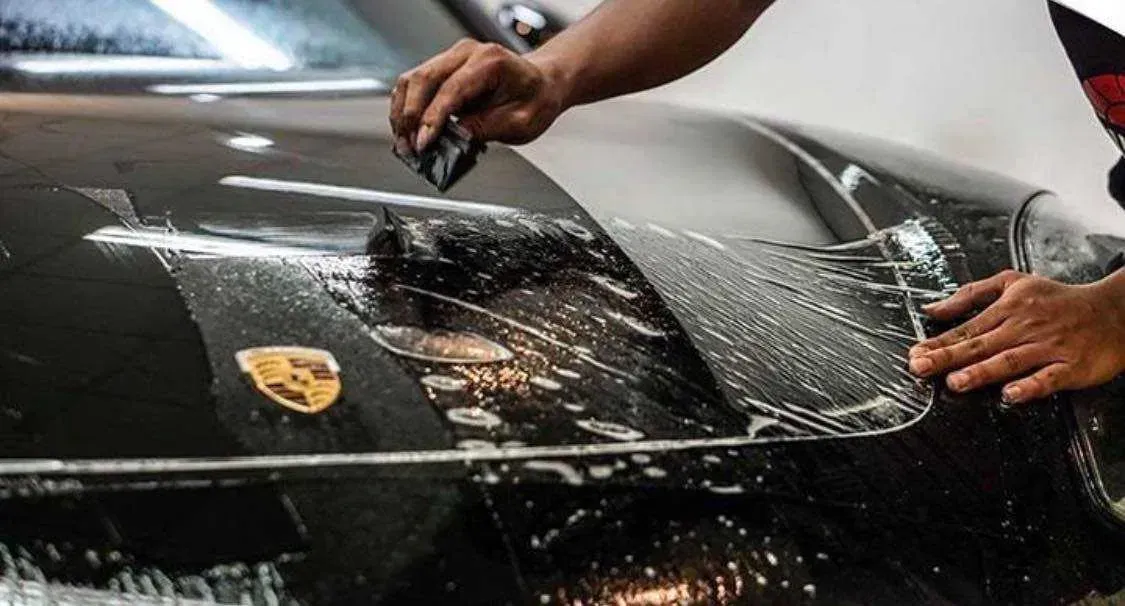
Transform the look of your vehicle with premium custom car wraps and vehicle graphics offered by Five Star Auto Tint, California’s trusted name in automotive styling. Whether you want to upgrade your car’s appearance, promote your brand, or protect your paint, our expert team delivers high-quality wrap solutions that make your vehicle stand out on the road. Premium Car Wrap Services in California At Five Star Auto Tint, we specialize in full wraps, partial wraps, color-change wraps, commercial wraps, and custom vehicle graphics . Using industry-leading vinyl films, advanced installation techniques, and precise detailing, we ensure long-lasting results with a flawless finish. Why Choose Our Car Wrap Services? ✔ High-quality vinyl materials for durability and vibrant color ✔ Expert installation with bubble-free, seamless application ✔ Fade-resistant & weather-resistant wraps for long-term protection ✔ Custom designs & branding solutions for businesses ✔ Cost-effective alternative to repainting ✔ Easy to remove or update anytime Whether you drive a sedan, SUV, truck, or commercial fleet vehicle, we customize every wrap to match your style and purpose. Custom Vehicle Graphics for Personal & Commercial Use Stand out instantly with professionally designed vehicle graphics tailored to your message, brand, and vision. From company logos to full promotional designs, we help businesses increase visibility and attract more customers through eye-catching mobile advertising. Your vehicle becomes a moving billboard — promoting your brand 24/7 across your local area. Serving Modesto, Livermore, Sacramento & Surrounding California Areas Our services are available across multiple key California locations, including: Modesto – Top-rated car wrap and graphics installation Livermore – Professional custom wraps for personal & commercial vehicles Sacramento – Premium wrapping services with advanced design options Wherever you are in California, we ensure the same high-quality service and exceptional finish your vehicle deserves. Enhance & Protect Your Vehicle Today A custom car wrap is more than just a style upgrade — it’s a smart investment in your vehicle’s appearance and resale value. At Five Star Auto Tint, we combine creativity, skill, and premium materials to deliver results that exceed expectations. 👉 Ready to transform your vehicle? Visit fivestarautotint.com and book your Custom Car Wrap Service today!

Keeping your car looking brand new can be a challenge, especially with daily exposure to dirt, UV rays, and weather elements. That’s where professional ceramic coating services come in, providing long-lasting protection and a flawless shine. At Five Star Auto Tint , we specialize in high-quality ceramic coating that shields your vehicle from scratches, water spots, and fading. Our advanced coatings create a durable layer over your car’s paint, making cleaning easier and maintaining that glossy, showroom finish. Why Choose Ceramic Coating? Long-lasting Protection: Ceramic coating keeps your paint safe from environmental damage for years. Enhanced Gloss & Shine: Achieve a sleek, polished look that turns heads on the streets of Modesto. Easier Maintenance: Dirt, grime, and water slide off easily, reducing washing time. Cost-Effective: Protecting your car’s paint now saves money on costly repairs or paint corrections later. Our Services in Modesto, CA Five Star Auto Tint provides professional ceramic coating services across Modesto, ensuring your vehicle looks amazing while staying protected. Our team uses only premium products and techniques to guarantee lasting results. If you want to protect your investment and maintain a flawless finish , contact us today and schedule your ceramic coating service in Modesto: https://fivestarautotint.com/ceramic-coating .
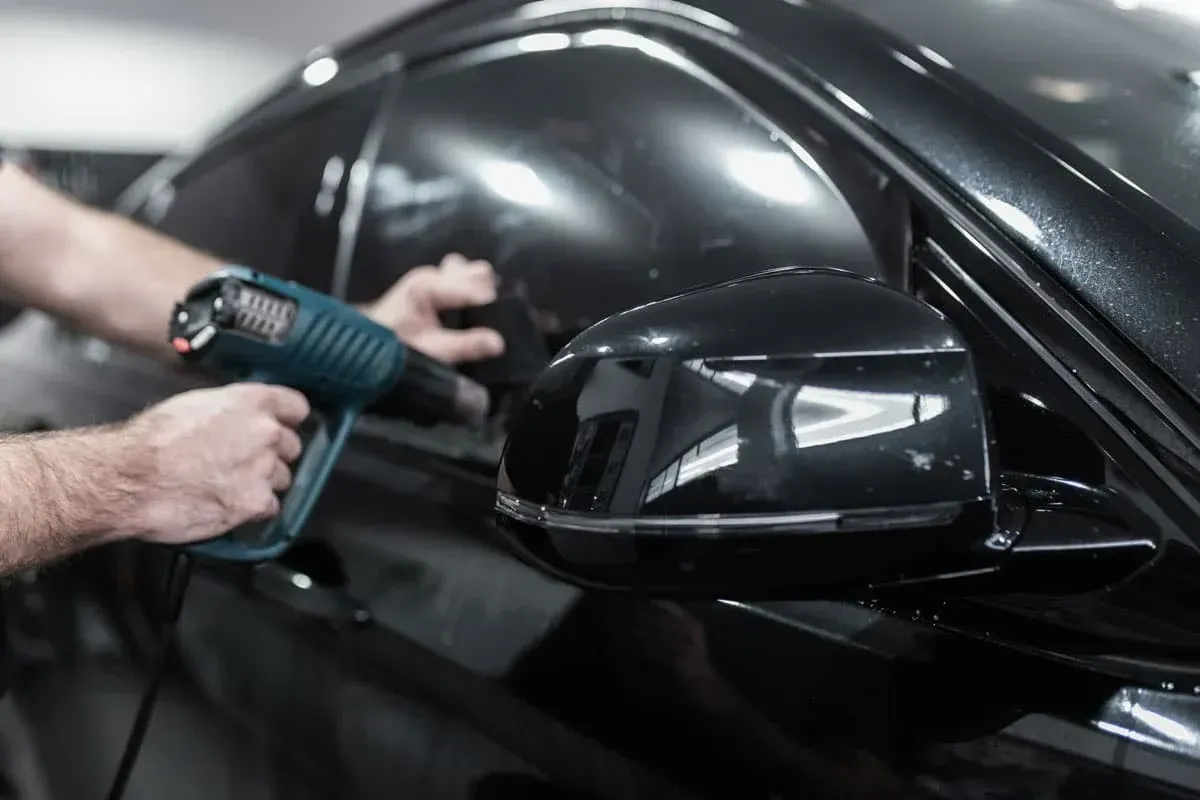
UV rays can silently damage your car’s interior, fade your upholstery, crack your dashboard, and even affect your skin while driving. The best long-term solution? Heat-blocking ceramic window tint — the most advanced protection technology available today. If you’re looking for premium ceramic tint installation in California , trust the experts at Five Star Auto Tint . Visit: https://fivestarautotint.com Why UV Protection Matters for Your Vehicle Las Vegas, California, and most sunny states experience strong UV radiation all year. Without proper protection, UV exposure can cause: Fading seats & dashboards High internal temperatures Cracked leather interiors Increased AC usage Health risks from UV exposure Heat-blocking ceramic tint solves these problems instantly. What Makes Heat-Blocking Ceramic Tint the Best Solution? 1. Maximum UV Protection (Up to 99%) Ceramic tint blocks 99% of harmful UV rays , keeping you safe and protecting your car’s interior from long-term damage. 2. Advanced Heat Rejection Ceramic window tint reduces heat significantly, making your car cooler even on the hottest days. 3. No Signal Interference Unlike metallic tints, ceramic film does not affect: GPS Cell signal Radio Bluetooth 4. Crystal-Clear Visibility You get complete UV protection without compromising clarity — perfect for safe driving day and night. Top Benefits of Ceramic Window Tint Installation ✔ Reduce glare instantly ✔ Protect your skin from UV exposure ✔ Prevent cracking & fading of interior ✔ Improve energy efficiency by lowering AC usage ✔ Increase resale value ✔ Enhance exterior appearance Want long-lasting protection? Get it done by trusted tinting specialists: 👉 https://fivestarautotint.com Why Choose Five Star Auto Tint for Ceramic Window Tinting? Five Star Auto Tint is known for delivering premium-quality tinting services in Modesto, Livermore, Sacramento, and surrounding California areas. Their team uses industry-leading ceramic tint technology that guarantees: Professionally installed tint Lifetime durability High heat rejection Perfect finish with no bubbles 100% customer satisfaction Whether you need tint for cars, trucks, SUVs, or commercial vehicles , they offer tailored solutions for every need. Explore all services: 👉 https://fivestarautotint.com

When it comes to protecting your car and keeping it looking brand new, finding the right auto-care professionals makes all the difference. At Five Star Auto Tint , we go beyond basic tinting — offering Auto Detailing, Paint Protection Film (PPF), Ceramic Coating, Car Wraps, Car Mats, Headlight Film , and many other premium services designed to elevate your vehicle’s appearance and protection. Whether you drive daily or own a luxury car, maintaining your vehicle is an investment — and we make sure you get results you can be proud of. Why Auto Detailing Matters Auto detailing is more than a simple car wash. It restores your vehicle’s shine, removes stubborn dirt, and protects surfaces from long-term damage. At Five Star Auto Tint, our detailing service includes: Deep interior cleaning Exterior wash & polish Tire & trim shine Dashboard and leather conditioning Your car not only looks fresh but stays cleaner for longer — making it perfect for resale value and daily use. PPF (Paint Protection Film): The Ultimate Shield Paint Protection Film is one of the strongest ways to protect your car from: Scratches Stone chips UV damage Swirls and stains Our high-quality PPF is nearly invisible and provides long-lasting shine. It’s ideal for sports cars, luxury vehicles, and new car owners who want their paint to stay flawless. Transform Your Vehicle with Car Wraps Car wraps are an excellent way to change your car’s look without repainting . Choose from: Matte finishes Glossy wraps Chrome styles Custom colors A wrap gives your vehicle personality while protecting the original paint underneath. Ceramic Coating for Long-Term Shine If you want your car to shine for years and be easier to wash, ceramic coating is the answer. It provides: Hydrophobic protection UV resistance Scratch resistance Permanent glossy finish Ceramic coating helps your vehicle maintain that “new car look” with minimal effort. Other Premium Services We Offer Five Star Auto Tint also provides: Headlight Tint / Film Car Mats Installation Interior Protection Films Auto Accessories Deep Cleaning & Restoration From full-body protection to stylish upgrades, we make sure your car gets the care it deserves. Why Choose Five Star Auto Tint? Professional installers Premium materials Advanced tools & technology Quick service 5-star customer satisfaction We provide results that last — with a perfect combination of style, protection, and quality. Final Thoughts Whether you need auto detailing , PPF , car wraps , or any other premium service, Five Star Auto Tint delivers exceptional quality every time. Protect your investment, enhance your car’s look, and drive with confidence.
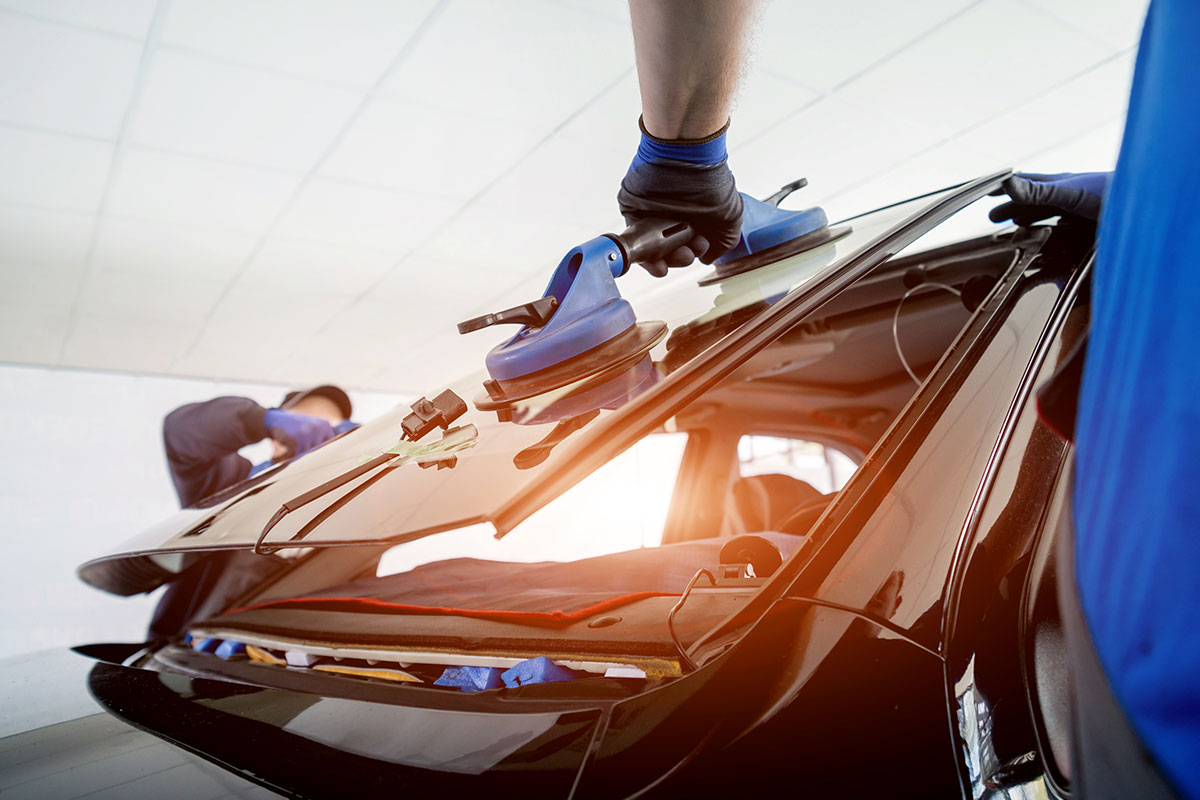
California is known for its sunny skies, long summers, and intense heat — which can take a toll on your vehicle’s interior and overall comfort. If you’re looking to protect your car from the harsh California sun , improve privacy, and enhance style, ceramic window tint is the ultimate solution. At Five Star Auto Tint , we specialize in professional ceramic window tint installation for cars, trucks, and SUVs across Modesto, Livermore, Sacramento, and surrounding areas. What Makes Ceramic Window Tint Superior? Ceramic window tint is a high-performance solution that outperforms traditional tint films in multiple ways: 1. Unmatched Heat Rejection Ceramic tint blocks up to 50-60% of solar heat , keeping your car cooler even on the hottest California days. Unlike traditional tint films, ceramic does not fade or warp over time, ensuring long-lasting protection. 2. UV Ray Protection Over 99% of harmful UV rays are blocked by ceramic window tint. This protects your car’s interior from sun damage — preventing cracked dashboards, faded seats, and deteriorated leather — while also protecting your skin. 3. Glare Reduction for Safer Driving Ceramic tint significantly reduces glare from the sun and headlights, improving visibility and reducing eye strain. This makes driving safer during bright mornings, afternoons, or night-time commutes. 4. Enhanced Privacy Without Sacrificing Clarity Ceramic tint provides privacy by reducing visibility into your vehicle while maintaining crystal-clear outward visibility , unlike cheaper metallic tints which can distort views. 5. No Signal Interference Unlike metalized tints, ceramic films do not interfere with GPS, radio, or cellphone signals , making them ideal for modern vehicles with advanced electronics. Why Choose Five Star Auto Tint in California? At Five Star Auto Tint , we pride ourselves on delivering top-quality ceramic window tint services with professional installation and unmatched customer service. Here’s why we are the preferred choice for California drivers: Experienced Technicians : Our certified installers ensure a perfect, bubble-free finish. High-Quality Materials : We use premium ceramic films designed for long-lasting performance. Custom Solutions : Every vehicle is different; we provide tailored solutions based on your needs. Trusted in Northern California : Serving Modesto, Livermore, Sacramento, and beyond. Affordable Pricing : Get premium quality without breaking your budget. Additional Benefits of Ceramic Window Tint Reduces heat and saves on AC usage Enhances your car’s aesthetic appearance Improves resale value by protecting interiors Durable and scratch-resistant Eco-friendly and long-lasting Ready to Beat the California Heat? Don’t let the sun damage your car or make your drives uncomfortable. Invest in ceramic window tint today with Five Star Auto Tint — your trusted experts for professional car window tinting in Modesto, Livermore, and Sacramento . Call us today at 702-736-1437 or visit our website to book your appointment and experience the ultimate in comfort, safety, and style. Five Star Auto Tint — Protecting Cars, Enhancing Comfort, Serving California.
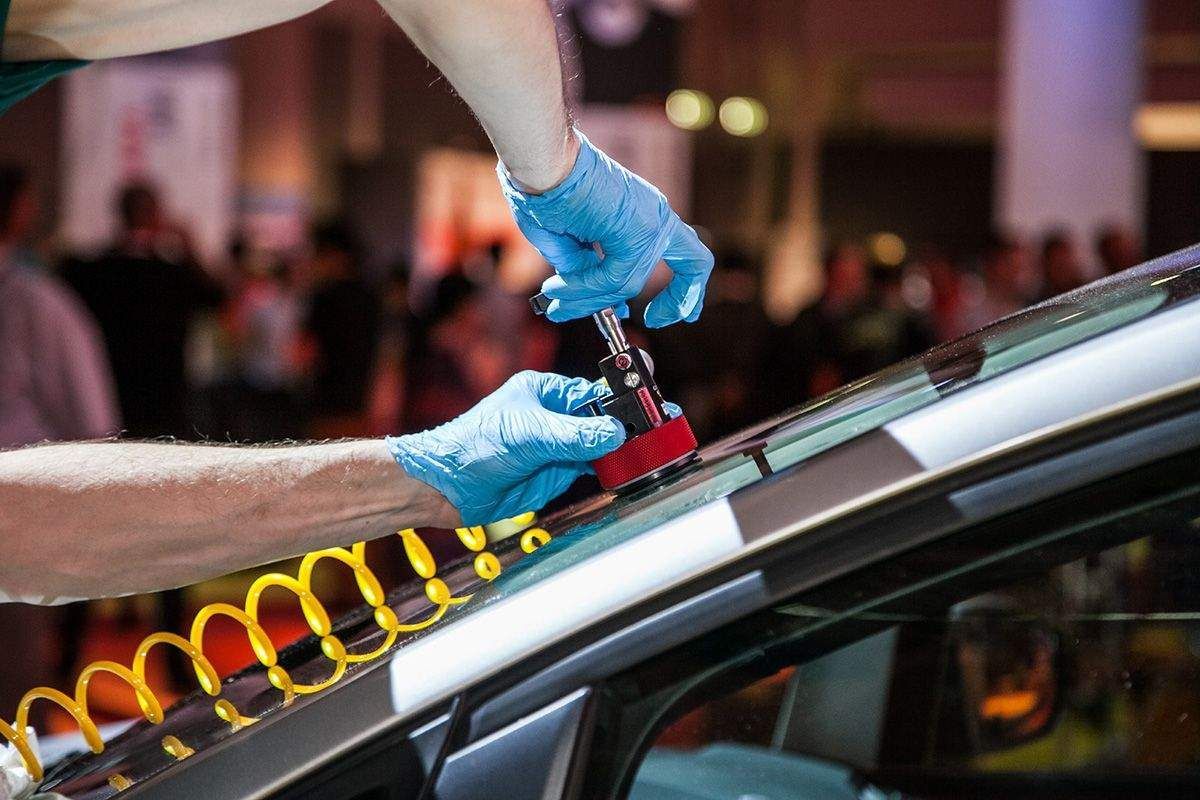
Your car’s windshield does far more than just block wind and dust—it is a critical part of your vehicle’s safety structure, visibility, and driving comfort. Yet, many drivers ignore cracks, chips, and minor damage until it becomes a serious problem. Delaying a windshield replacement can increase risks, raise repair costs, and compromise your safety on the road. If you want professional, fast, and high-quality windshield replacement services, Five Star Auto Tint is the trusted name in California. Visit: https://fivestarautotint.com/ Below are the top reasons why you should never wait when your windshield gets damaged. 1. A Damaged Windshield Weakens Your Car’s Safety Structure Your windshield supports nearly 30% of your vehicle’s structural integrity. In an accident, rollover, or heavy impact, a cracked windshield may: Shatter more easily Fail to support the roof Increase injury risk Compromise airbag deployment This is why choosing professional windshield replacement in California is not optional—it’s essential. 2. Cracks Spread Faster Than You Think Heat, cold, vibrations, bumps, and even humidity can expand a small crack overnight. Once the crack spreads, repair becomes impossible—you’ll need a full replacement. Getting quick service from Five Star Auto Tint ensures your windshield is replaced before the damage worsens. 3. A Damaged Windshield Reduces Visibility Driving with a cracked or chipped windshield directly affects: Clarity Depth perception Night driving visibility Reaction time Poor visibility is one of the main causes of road accidents. To avoid this risk, schedule a same-day windshield replacement with professionals you trust. 4. Airbags Rely on Your Windshield Most people don’t know that: Your passenger-side airbags push against the windshield during deployment. If the windshield is damaged or weak, the airbags won’t deploy properly. This can lead to serious injuries. 5. Police Can Fine You for a Damaged Windshield In many states, including California, a cracked windshield can result in: Traffic fines Ticket warnings Safety inspection failures Avoid unnecessary trouble and get your auto glass fixed by specialists. 6. Replacing Your Windshield Increases Car Value A clean, clear, properly installed windshield: Makes your car look newer Improves resale value Shows proper maintenance Increases buyer confidence Five Star Auto Tint ensures high-quality OEM-grade glass so your car stays in perfect condition. 7. Five Star Auto Tint Provides Reliable, High-Quality & Affordable Service If you want a trusted windshield replacement service in Modesto, Livermore, Sacramento, and surrounding areas, Five Star Auto Tint is the best choice. You get: High-quality auto glass Expert installation Fast service Affordable pricing Professional customer support Mobile windshield replacement option 👉 Visit now: https://fivestarautotint.com/ Your car deserves the best — and so does your safety.

If you’re looking to enhance your vehicle’s appearance while keeping it cool and protected, Five Star Auto Tint offers professional ceramic window tinting services in Modesto and Sacramento. Our ceramic tints are designed to block harmful UV rays, reduce heat, minimize glare, and provide privacy—all while maintaining the sleek look of your car. Unlike standard tints, ceramic window tints do not interfere with electronics and offer superior durability and clarity. Whether you drive a daily commuter, luxury car, or SUV, our expert team ensures precise installation for a flawless finish. Why Choose Ceramic Tint at Five Star Auto Tint? UV Protection: Protects your car’s interior and your skin from harmful rays. Heat Reduction: Keeps your car cooler during sunny days. Glare Reduction: Improves driving comfort and safety. Enhanced Privacy & Security: Keep your belongings safe while enhancing your car’s style. Durable & Non-Metallic: Unlike metallic tints, ceramic tints do not interfere with GPS or cell signals. At Five Star Auto Tint , we pride ourselves on using the latest technology and techniques to deliver high-quality tinting services. With over 15 years of combined experience, our team guarantees customer satisfaction with every job. Whether you’re upgrading your vehicle for aesthetics, comfort, or protection, our ceramic tinting services are the perfect solution. Schedule your appointment today and experience why customers trust Five Star Auto Tint for the best tinting services in Modesto and Sacramento. Contact us now to book your ceramic tint installation and protect your car with style!
